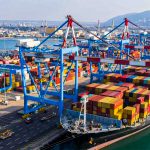Listen to the audio version of the blog here:
A single piece of paper can decide the fate of your ownership in maritime logistics. As dramatic as it sounds, it’s the truth. Whether it is a shipment of luxury cars from Germany or raw cotton from Gujarat, Bill of Lading acts like a passport, receipt and title deed all rolled in one. With the introduction of new Bill of Lading India, 2025, there are some changes in this very important document. Before we dive into what changed, let’s understand the document at the heart of it all.
What is “Bill of Lading”?
Bill of Lading is a document issued by the carrier to a shipper, mainly serving three key purposes.
- It serves as a receipt of the goods shipped.
- It is proof that the contract of carriage exists.
- It is the document of title, implying whoever holds it can claim the goods.
It contains all the information related to the marine cargo, including where the shipment is coming from and going to, as well as details of the shipper, carrier and consignee. It is of high importance that the bill of lading must accompany shipped goods. Without the documents, the goods can not be received by the consignee.
The new Bill of Lading, 2025
On 21 July 2025, Indian parliament passed the new Bill replacing the Indian Bills of Lading Act, 1856. The previous law, crafted in the times when there was no technological or digital introduction, is now revamped to introduce a modern, tech-friendly, legal framework in an accessible and clearer language.
The law finally gives legal weight to digital documents, enabling the issue and transfer of e-BOLs that are faster, more secure and paper-free. It allows the government to frame rules, issue notifications and set standards for digital adoption and enforcement, ensuring the law evolves with technology.
How does it boost the growth of Indian maritime logistics?
With the introduction of E-BoL, shipping documents no longer have to travel physically, which reduces delays, port congestion and demurrage charges. With digitalisation and legal clarity in the port logistics documentation, the delay in legal clearance is shortened, cutting down costs.
The Bill also aligns India with international practices (like UNCITRAL’s model laws), making Indian trade partners more comfortable and legally protected. India, now focusing on strengthening its logistics game, has a clear shot at the global market with a clearer legal and digital framework of logistics.
What’s next in Indian maritime logistics?
The Bills of Lading Bill, 2025 brings in digital speed, legal clarity and global alignment that can boost how efficiently goods move in and out of the country. But like any framework, it needs to address the challenges that come along with it. Ports, shipping lines and exporters will need better digital systems and training. Security and fraud prevention in digital documentation must also be taken seriously.
Still, this law acts as the foundation of Indian maritime logistics in the global market, and the future of the maritime logistics in India depends on how strongly we put it to use.



